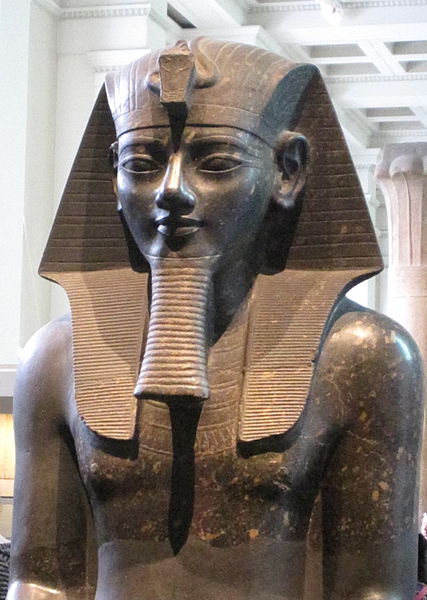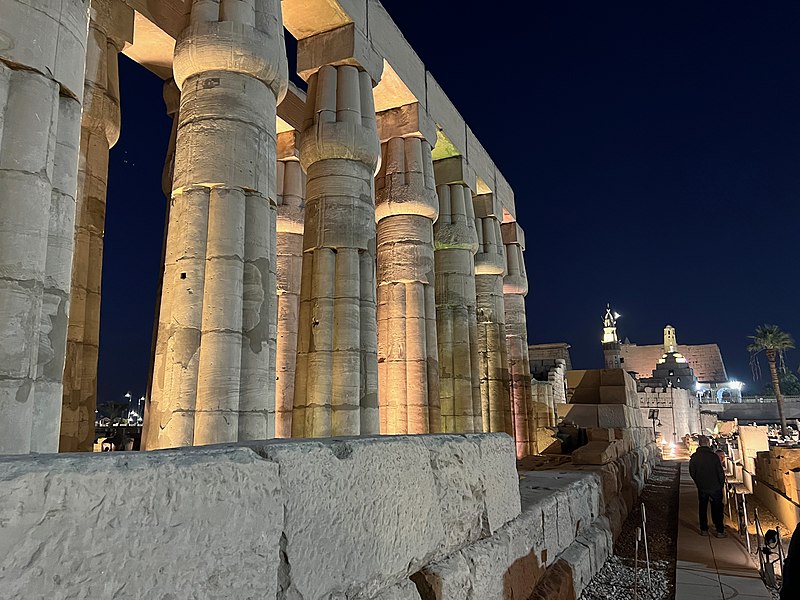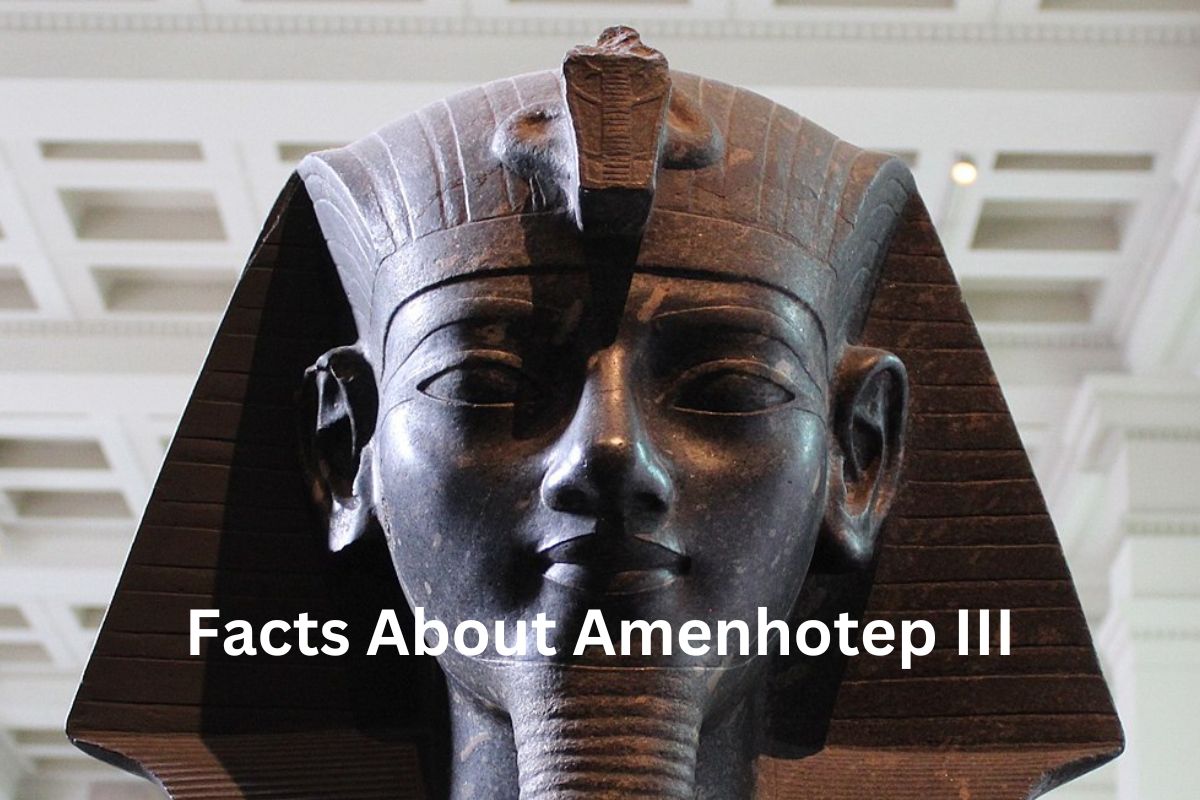Amenhotep III was an ancient Egyptian pharaoh who ruled during the 18th dynasty, approximately from 1386 to 1353 BCE. He ascended to the throne at a young age and pursued a policy of diplomatic expansion, establishing peaceful relations and trade networks with neighboring kingdoms.
Amenhotep III is renowned for his grand architectural projects, including the “Temple of Millions of Years” in Thebes and the iconic Colossi of Memnon. He was married to Queen Tiye, who held significant influence, and together they fostered stability and prosperity during his reign.
Amenhotep III had a large harem and fathered numerous children, including the famous pharaoh Akhenaten. His reign is considered a “Golden Age” marked by opulence, cultural flourishing, and diplomatic achievements.
Amenhotep III’s reign lasted for almost four decades, making him one of the longest-reigning pharaohs in Egyptian history.
Amenhotep III Facts
1. Amenhotep III was an ancient Egyptian pharaoh
Amenhotep III was an ancient Egyptian pharaoh who ruled during the 18th dynasty, one of the most prominent and powerful dynasties in ancient Egypt’s history.
Also Read: Amenhotep III Accomplishments
The 18th dynasty is often referred to as the “New Kingdom” and is known for its military prowess, territorial expansion, and cultural achievements.

2. He reigned during the 18th dynasty, approximately 1386-1353 BCE
Amenhotep III ascended to the throne at a young age. He was born as Amenhotep, the son of Thutmose IV, and became the heir apparent to the Egyptian throne.
His father’s death meant that he inherited the responsibilities of kingship at a relatively early age, estimated to be around 12 or 13 years old.
3. Amenhotep III inherited the throne at a young age
The transition from being a young prince to a pharaoh presented both challenges and opportunities for Amenhotep III.
Despite his young age, he had the support and guidance of experienced advisors and officials who helped him navigate the complexities of ruling an ancient kingdom.
This support was crucial for the stability and continuity of the Egyptian state during his reign. Additionally, the early years of his rule allowed him to shape his vision for Egypt and establish his authority as a ruler.
4. He expanded the Egyptian empire through diplomacy, not war
During his reign, Amenhotep III pursued a policy of diplomatic expansion rather than relying heavily on military conquest. Instead of engaging in large-scale military campaigns, he focused on establishing and maintaining peaceful relations with neighboring kingdoms and regions.
This approach allowed him to consolidate Egypt’s influence and expand its trade networks. Through diplomacy, he secured alliances, negotiated favorable trade agreements, and established diplomatic ties with various nations, including those in Nubia, Syria, and the Mediterranean.
5. Amenhotep III built grand monuments
One of the remarkable architectural achievements of Amenhotep III was the construction of grand buildings and monuments throughout Egypt. The most famous among them was his mortuary temple located in Thebes, known as the “Temple of Millions of Years” or the “Luxor Temple.”
This massive temple complex was dedicated to the worship of Amun-Ra, the chief deity of ancient Egypt. It served as a focal point for religious ceremonies and rituals honoring the pharaoh’s divine nature and posthumous existence.
Another notable monument associated with Amenhotep III is the Colossi of Memnon, two colossal statues representing the pharaoh seated on a throne. These statues, over 18 meters tall, stood at the entrance of his mortuary temple.

6. He was married to Queen Tiye, who held significant influence
Amenhotep III was married to Queen Tiye, who played a prominent role during his reign. Queen Tiye was known for her intelligence, beauty, and influence.
She held considerable power and was actively involved in diplomatic affairs, accompanying the pharaoh on state visits and acting as his trusted advisor. Queen Tiye was also revered as a divine consort and played a crucial role in the religious life of Egypt.
The couple had a strong partnership, and their relationship was characterized by mutual respect and cooperation. Together, they fostered a sense of stability and prosperity in Egypt during Amenhotep III’s reign.
7. Amenhotep III had a large harem and numerous children
Amenhotep III had a vast harem and is believed to have fathered numerous children. In ancient Egypt, it was customary for pharaohs to have multiple wives and concubines, which allowed them to solidify political alliances and ensure a secure line of succession.
While the exact number of Amenhotep III’s offspring is not known, it is estimated that he fathered more than 100 children. His children held important roles in the royal court and were married off to strengthen diplomatic ties with other kingdoms.
8. He was a patron of the arts and encouraged cultural development
One of Amenhotep III’s most famous sons was Amenhotep IV, who later changed his name to Akhenaten.
Akhenaten is well-known for his radical religious reforms, during which he attempted to transition Egypt from a polytheistic society to a monotheistic one centered around the worship of the Aten, the sun disk.
This marked a significant departure from the traditional religious practices of Egypt. Akhenaten’s reforms had a profound impact on the religious, artistic, and social landscape of Egypt, and he is often regarded as one of the most controversial pharaohs in Egyptian history.
9. His reign is considered a “Golden Age” of prosperity
Amenhotep III’s reign is often referred to as the “Golden Age” of the 18th dynasty. His rule was characterized by remarkable prosperity, stability, and cultural flourishing.
Egypt experienced an unprecedented level of wealth and luxury during this time, as trade networks expanded, tribute flowed in from vassal states, and the economy boomed.
The pharaoh’s court was known for its opulence and extravagance, attracting artists, poets, and intellectuals from all over the ancient world. Amenhotep III’s reign was marked by architectural achievements, artistic advancements, and the promotion of literature and music.
10. Amenhotep III’s reign lasted for nearly four decades
Amenhotep III’s reign lasted for nearly four decades, making him one of the longest-reigning pharaohs in ancient Egyptian history. His ability to maintain stability and prosperity for such an extended period was a testament to his political acumen and skilled administration.
However, towards the later years of his reign, there are indications of declining health and possible coregency with his son, Akhenaten. Amenhotep III passed away around the age of 50 and was succeeded by Akhenaten, who ushered in a new era in Egyptian history with his religious reforms.
Despite his impressive reign, Amenhotep III’s legacy was largely overshadowed by the radical changes brought about by his son, Akhenaten, and the subsequent pharaohs who followed.
